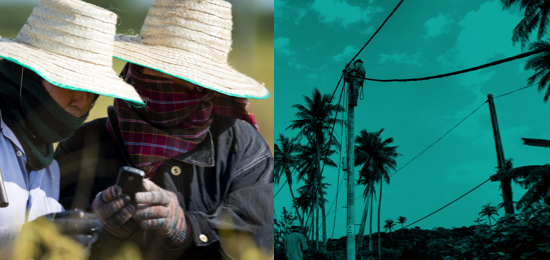Working towards digital inclusion: digital companies share lessons

COVID-19 has increased the urgency to achieve digital inclusion across the world. Digital inclusion is not only a key economic recovery tool from the pandemic but also a catalyst for the achievement of the United Nations’ Sustainable Development Goals. The world’s most influential technology companies have a mandate to demonstrate leadership to reduce the existing social and digital inequalities. Their work should widen the social and digital inclusion among excluded demographics and regions. Therefore, leading technology companies must collaborate strategically in developing effective and sustainable digital inclusion initiatives. These inclusive digital initiatives must remove barriers that limit various groups from digital skills, accessing, innovating and safely using digital technologies.
Creating a community of practice for technology companies
During the course of the 2020 Digital Inclusion Benchmark, companies who were ranked and assessed asked the World Benchmarking Alliance (WBA) to create a community where they could discuss key issues on existing digital inequalities. These companies were motivated to learn from each other’s unique experiences and implement learnings in their respective organisations. Existing multistakeholder digital inclusion indexes, practices and measurement frameworks narrowly focus on access and usage indicators. However, WBA’s Digital Inclusion Benchmark takes a more comprehensive and holistic approach to assess digital companies. Companies are assessed on four key areas of digital inclusion: enhancing access; improving digital skills; fostering trustworthy use; and innovating openly, inclusively, and ethically.
In April 2021, over 20 of the biggest tech companies, participated in WBA’s maiden virtual workshop, which was dubbed Community of Practice – a community of tech companies discussing digital inclusion and their experiences as changemakers driving digital inclusion in their organisations. During the Community of Practice, companies discussed collaborative approaches to closing the digital divide gap. Some of the approaches included providing an opportunity for peer learning and a deeper understanding of digital inclusion topics. Emphasis was placed on the need for companies to know how to use Digital Inclusion Benchmark’s findings to facilitate change in their organisations.
Co-learning to improve digital inclusion
The workshop covered some of the internal practices implemented by technology companies to ensure digital inclusion for their consumers and the emerging markets they operate in. For example, based on Digital Inclusion Benchmark’s methodology and indicators, some tech companies have developed a digital inclusion disclosure checklist. Some companies have introduced sustainability champions within different divisions of their companies to embed sustainability and inclusion indicators. Others regularly communicate with their marketing and IT departments to ensure products and services developed are inclusive.
The companies emphasised that the digital inclusion ranking and assessment of tech companies has created healthy competition. Also, it has served as a great motivation among the companies to increase their effort to improve companies ranking. For example, some investors and CEOs are making available resources to innovate and produce digital products that can reach marginalised and vulnerable communities and groups.
50 additional companies to be assessed
This year, Digital Inclusion Benchmark will be ranking 50 additional tech companies to assess their performance towards digital inclusion. Through series of workshops like the Community of Practice, WBA is working to support assessed digital technology companies on their journey to building a digitally inclusive world.
To learn more about the work of WBA and the Digital Inclusion Benchmark follow us on Twitter and LinkedIn.